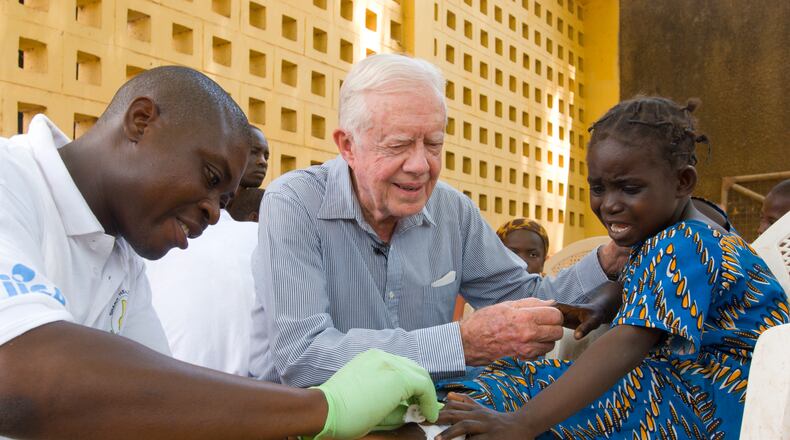Adam Weiss saw his first case of Guinea worm disease as a Peace Corps volunteer in 2003.
“I had never heard of Guinea worm before arriving in Ghana,” he said.
The village where he worked would go on to report 100 cases of the parasitic disease.
For most Ghanaians today, the ailment exists only in the memories of their elders. Twelve years ago, the disease was eradicated in the West African country, according to the World Health Organization.
Weiss is orchestrating a worldwide effort by the Carter Center and multiple agencies to eliminate Guinea worm disease in the countries where it remains. Experts are tantalizingly close. Last year, there were 14 reported cases in four African countries — Ethiopia, Mali, South Sudan and Chad. That is the lowest count ever reported.
There were an estimated 3.5 million cases in 21 countries in Asia and Africa when the effort started in 1986.
Credit: Emily Howard Staub
Credit: Emily Howard Staub
“We have so much to be proud of, but we still have to be laser focused on these end-game challenges,” Weiss said. “What is challenging us most is the human condition and what societies deal with in these countries.”
That includes events such as civil war, local instability, COVID-19 and other disasters that stall or slow community health efforts.
Disease experts know the last few cases of a disease are the most difficult to wipe out. Between 2014 and 2020, the reported human cases bounced between a high of 126 and a low of 22.
The Carter Center, WHO, the Centers for Disease Control and Prevention in Atlanta and other cooperating agencies feel “a great sense of urgency in that we are at those final few inches,” Weiss said. Smallpox is the only disease ever eradicated.
Guinea worm disease results from people ingesting parasite larvae in water or undercooked fish. Once ingested, there is no treatment or cure. Lavae mate and produce thin female worms that can be nearly a meter long. After about a year, the worm creates a lesion on the skin and emerges from it, causing pain, disability and potential infection.
About the Author
Keep Reading
The Latest
Featured



